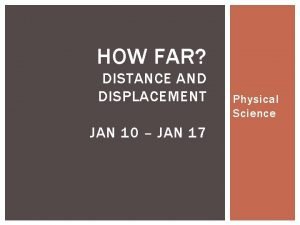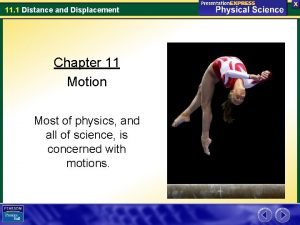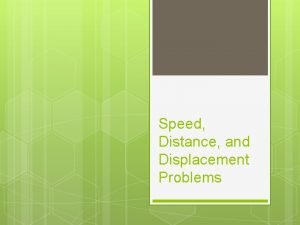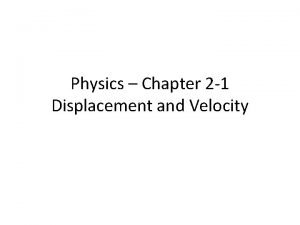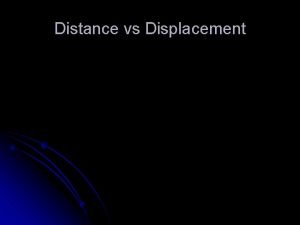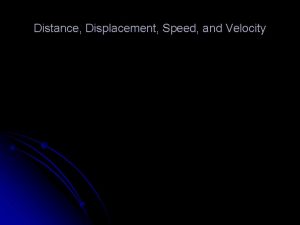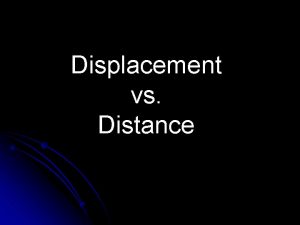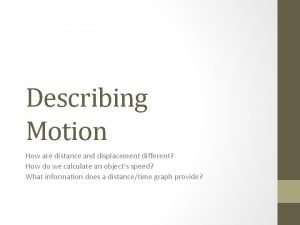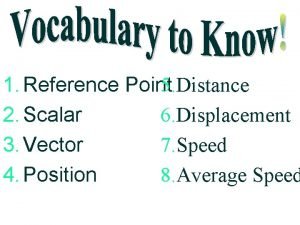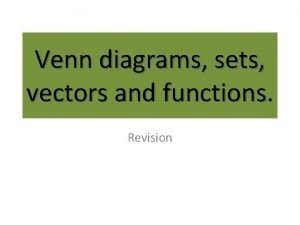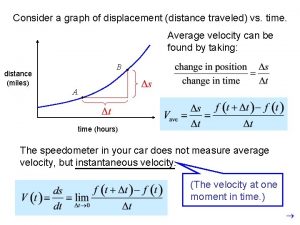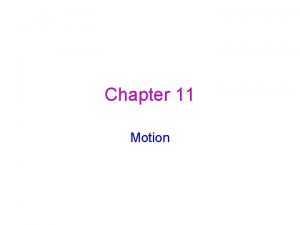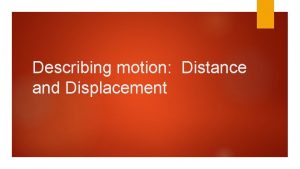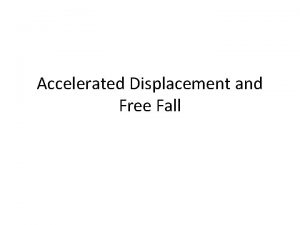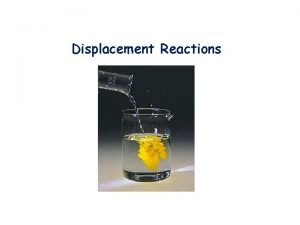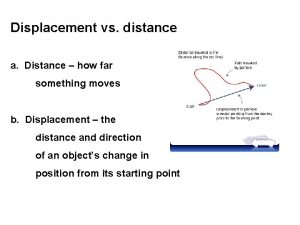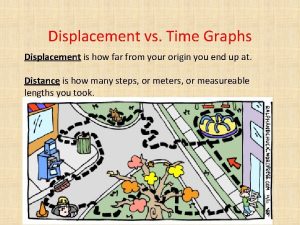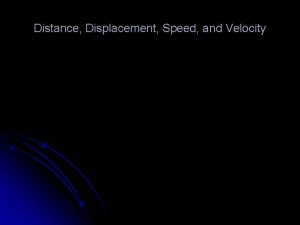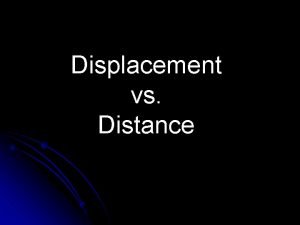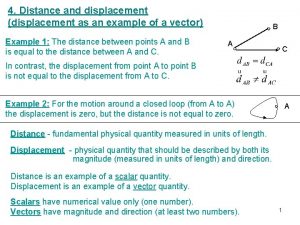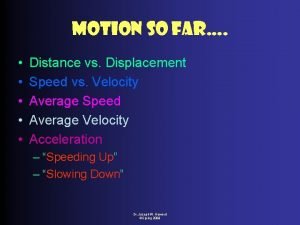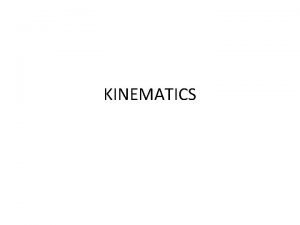CHAPTER 2 Distance vs Displacement Distance How far

















- Slides: 17

CHAPTER 2

Distance vs. Displacement • Distance: • How far an object has moved • I ran 10 meters north and 30 meters south. How far did I run? • Displacement: • How far the object moved from the starting point • What is my displacement in the previous problem?

Motion • Distance- how far object moved • Displacement- distance and direction the object moved from starting location • Speed = distance / time (Don’t forget units) • Ex: 5 m/s

Speed • You travel 10 meters in 2 seconds. What was your speed? • Your speed is 100 km/h and you’ve been driving for 5 hours. How far have you driven?

Average vs. Instantaneous • Average speed = total d / total t • Instantaneous speed = speed at that given second

Trickier problem • Sound travels at 330 m/s. If a lightning bolt hits the ground 1 km away from you, how long will it take for the sound to reach you?

Speed vs. Velocity • Speed = d / t • Velocity = speed of object and direction of its motion



Acceleration • Change in object’s velocity (speed and direction of motion) • Increasing speed =positive acceleration • Decreasing speed = negative acceleration • Acceleration = change velocity / time • Acceleration = (Vf – Vi) / t • Don’t forget units! • Ex: 5 m/s 2 • Gravitational acceleration 9. 8 m/s 2

Acceleration • A jet airliner starts at rest at the end of the runway and reaches a speed of 300 m/s in 20 seconds. Calculate the acceleration.

Acceleration again • A skateboarder is moving at a speed of 20 m/s and comes to a stop in 2 seconds. Calculate the acceleration.


Force • Push or pull on an object • Gravity is a basic force • Closer objects are together, the grav force between them increases

Balanced Force • Net force = 0 • Same force in opposite directions cancel each other out • No movement

Unbalanced Force • Unequal forces in opposite directions • Movement occurs • Net force = # in one direction • Centripetal force = unbalanced force, with an object accelerating towards the center

Inertia • Tendency of an object to resist a change in its motion • Newton’s 1 st Law of Motion: an object moving at a constant velocity or at rest will remain that way unless it is acted upon by a force • Why should we wear seatbelts?
 Distance and displacement
Distance and displacement Single displacement vs double displacement
Single displacement vs double displacement Belled, flowery, tyrolese valley figure of speech
Belled, flowery, tyrolese valley figure of speech On sour cream walls. donations’ suggests *
On sour cream walls. donations’ suggests * In a kingdom far far away
In a kingdom far far away Far far away city
Far far away city Chapter 11 distance and displacement
Chapter 11 distance and displacement John drove south 120 km at 60 km/h
John drove south 120 km at 60 km/h Displacement formula distance
Displacement formula distance Distance vs. displacement
Distance vs. displacement Distance vs displacement
Distance vs displacement Distance and displacement
Distance and displacement How is distance different from displacement
How is distance different from displacement Distance vs displacement symbol
Distance vs displacement symbol Displacement is distance combined with
Displacement is distance combined with Given the venn diagram below, what is the correct notation?
Given the venn diagram below, what is the correct notation? Displacement vs distance traveled
Displacement vs distance traveled Displacement is distance combined with
Displacement is distance combined with
